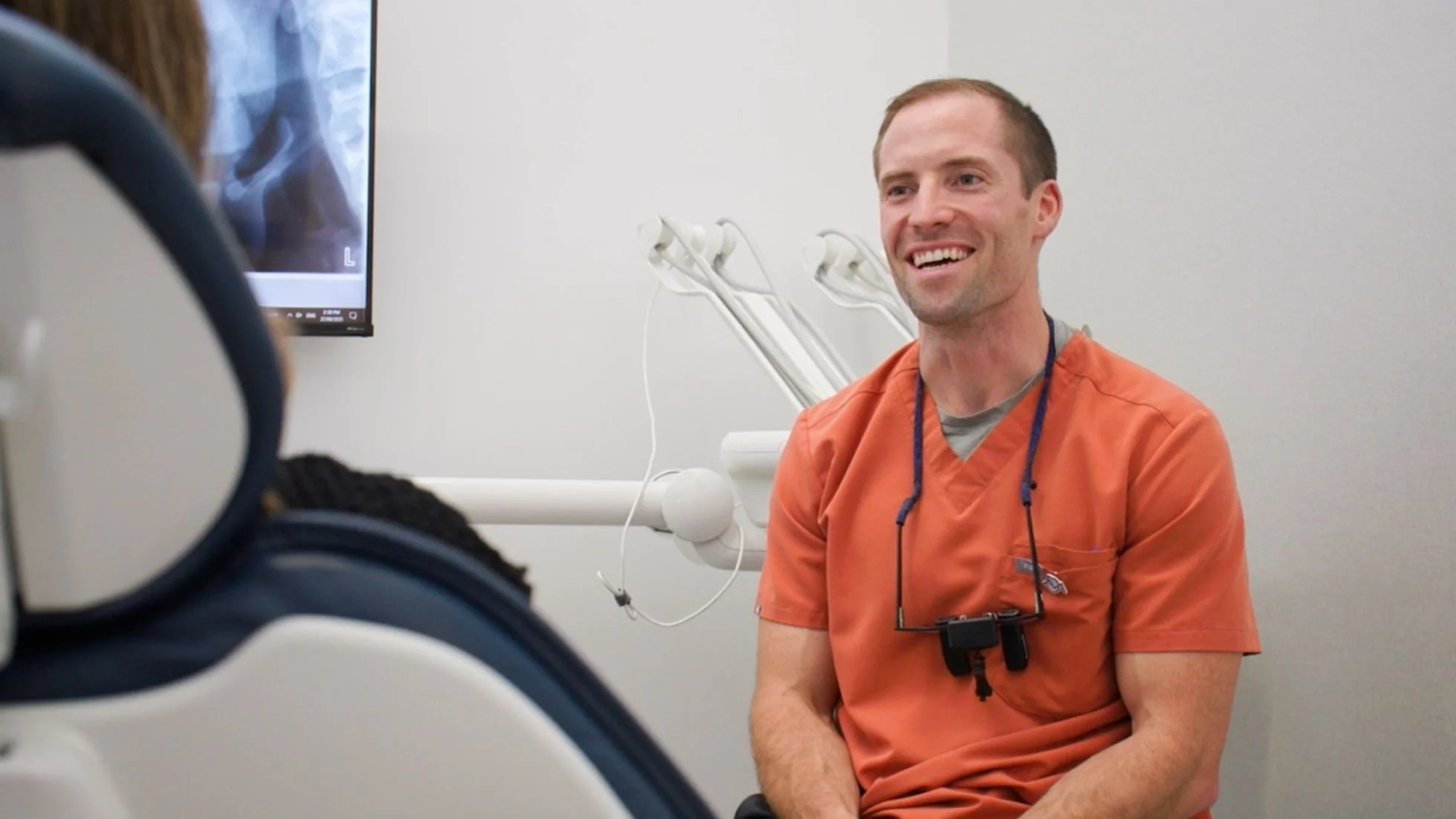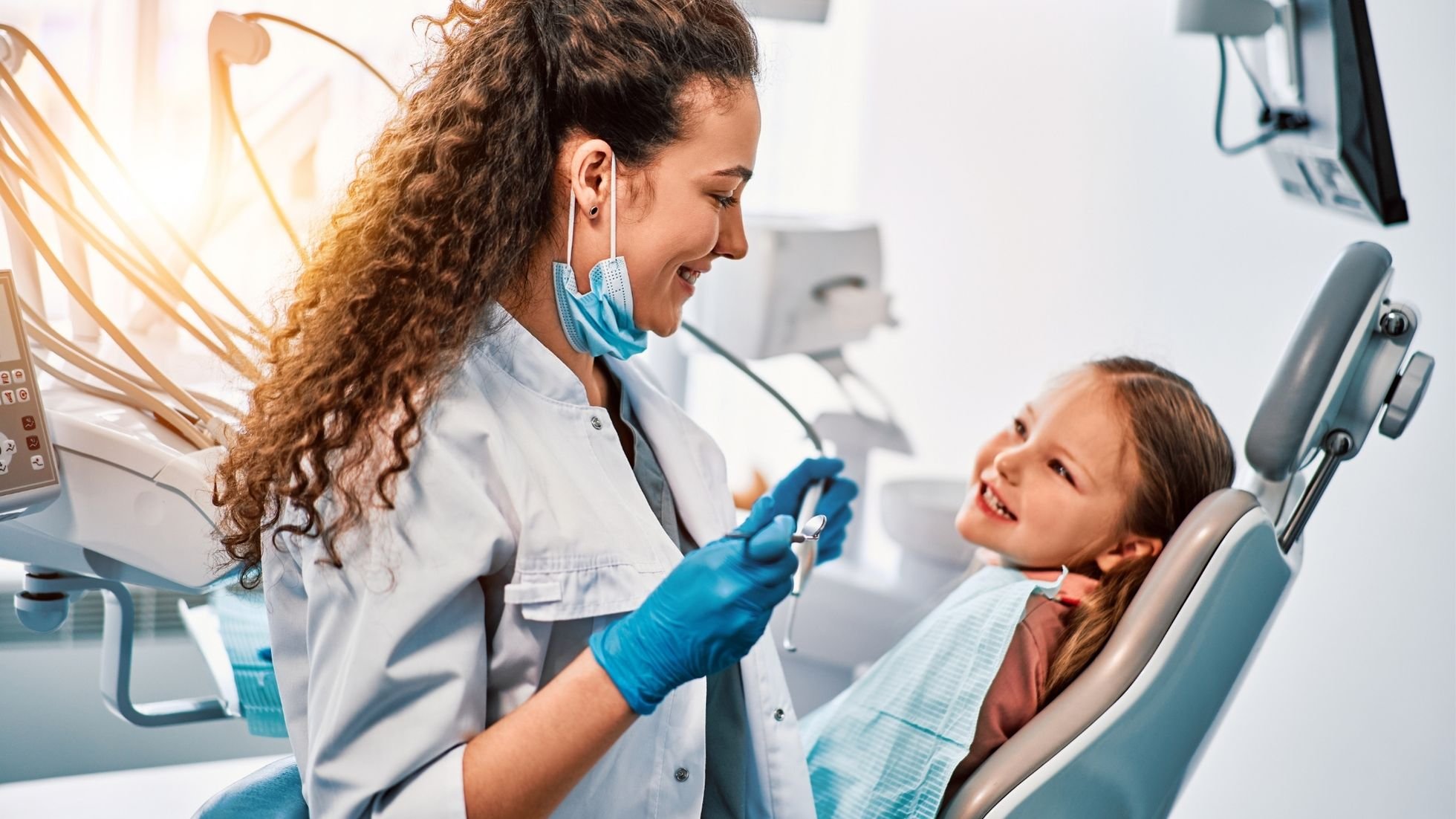
Complete Dental Services in Red Deer
Decades of experience. Modern technology. Care that feels like family.
-
For over 40 years, families across Red Deer have chosen us for our honesty, consistency, and personal approach. Many of our patients and staff have been with us for decades, proof that genuine care and long-term relationships matter most.
-
We blend proven expertise with the latest technology to make every visit efficient, comfortable, and tailored to you. From routine cleanings to full smile transformations, our focus is on prevention, comfort, and lasting results.
-
We treat every patient as we would our own family—with transparency, respect, and compassion. Whether you’re here for a simple check-up or a complete treatment plan, our team is here to guide and support you through every step.
✚ Check Ups
Regular dental check-ups are one of the easiest ways to protect your oral health and prevent issues early. At Ocudent, our team focuses on early detection and gentle care to make visits comfortable. As a trusted dentist in Red Deer, we’ll recommend a check-up schedule based on your age, oral hygiene, and lifestyle. Most routine exams take only 15–30 minutes, with convenient options like same day dental treatment and online booking.
FAQ’s
-
Most patients benefit from a dental check-up every six months, though we’ll personalize recommendations for your needs. Regular visits at Ocudent Red Deer help catch small issues early, making treatment simpler and more comfortable.
-
Your visit includes X-rays (if needed), a visual exam, and a conversation with your dentist about your oral health. As one of Red Deer's most trusted dental offices, we make sure you leave with clarity and confidence about your smile.
-
Yes, we welcome new patients of all ages. If you’re looking for a family dentist in Red Deer, Ocudent is here to provide gentle, honest care for the whole family.
✦ Dental Hygiene
Professional cleaning helps prevent gum disease and cavities before they begin. Our Ocudent dental hygiene team provides gentle care to keep every visit...We’re proud to be known as one of the best dental clinics in Red Deer for families seeking clarity, calm, and extra care.
FAQ’s
-
Even with good home care, plaque and tartar can build up. Visiting a Red Deer Dental Clinic for professional cleanings prevents gum disease and keeps your smile healthy.
-
Yes, we love caring for kids. As a family dentist in Red Deer, our team makes cleanings gentle, positive, and stress-free so kids feel comfortable at every stage.
-
Our patients often say we’re the best dentist in Red Deer thanks to our calming approach, modern clinic, and focus on treating patients like family.
✚ Fillings
Cavities happen, but fixing them doesn’t have to be stressful. At our clinic, we use modern techniques and materials to create fillings that blend naturally with your teeth. Our gentle approach makes each visit quick, comfortable, and focused on long-term health. As one of the trusted Red Deer dental clinics, we care for patients of all ages. Whether it’s your child’s first filling or your own, our family dentist in Red Deer ensures a positive experience with comfort and quality in every treatment.
FAQ’s
-
At Ocudent Red Deer, we use natural-looking materials that blend seamlessly with your teeth. This ensures your filling is strong, durable, and discreet.
-
Our patients are often surprised by how easy the process is. As one of the trusted Red Deer Dental Clinics, we focus on gentle techniques and your comfort at every step.
-
Absolutely! Many families choose us as their family dentist in Red Deer because we make treatments simple and positive for children as well as adults.
✦ Teeth Whitening
A confident smile can make all the difference. Our professional whitening treatments are designed to lift stains and brighten your teeth without causing sensitivity or discomfort. If you’re exploring teeth whitening in Red Deer, Alberta, Ocudent offers a calm, personalized experience that feels more like a self-care appointment than a dental procedure. We’ll help you choose the right approach for your smile goals, whether it’s a subtle refresh or a more radiant result.
FAQ’s
-
Yes. Professional whitening at Ocudent provides safe, lasting results while minimizing sensitivity. Store kits often can’t deliver the same consistency and longevity.
-
Results vary, but with good home care and routine visits to a dentist in Red Deer, whitening can last a year or more. We’ll also give you tips to help your smile stay bright.
-
Most patients are great candidates, though we’ll check your oral health first. At Ocudent Red Deer, we customize whitening so it’s safe and effective for your unique smile.
✚ Root Canals
Severe tooth pain can be overwhelming, but the right care brings quick relief. At Ocudent, our gentle root canal treatment in Red Deer removes infection, preserves your natural tooth, and keeps you comfortable throughout. If you need a tooth pain Red Deer dentist, our experienced team will do our best to provide same-day appointments and use advanced technology for efficient and precise care.
FAQ’s
-
Persistent tooth pain, swelling, or sensitivity are common signs. If you’re experiencing discomfort, visit a tooth pain Red Deer dentist right away so we can assess the best treatment plan for you.
-
With modern techniques, a root canal in Red Deer feels much like getting a filling. Our focus is always on gentle care and your comfort.
-
We’re part of a trusted community, in Deer Park Dental, Red Deer, known for skill and compassion. Our patients often share positive dentist reviews in Red Deer about their warm experiences.
✦ Crowns, Veneers, Bridges
From repairing a damaged tooth to creating a full, even smile, our crowns, veneers, and bridges are designed to look natural and feel comfortable. Each restoration is crafted to match your bite and facial features so your smile feels like your own. As one of Red Deer’s trusted dental offices, we take a detail-focused approach, using advanced materials and techniques in a gentle, supportive environment.
FAQ’s
-
A dental crown in Red Deer covers the whole tooth for strength and protection, while a veneer covers just the front for a cosmetic boost. We’ll recommend what’s best for your smile.
-
With good care, they can last 10–15 years or longer. Regular visits to Red Deer Dental Clinics help ensure your restorations stay strong and beautiful.
-
Yes. As a trusted cosmetic dentist in Red Deer, we provide crowns, veneers, and bridges designed to look natural while enhancing your confidence.
✚ DENTAL Implants
Dental implants are a strong, natural-looking way to restore your smile and confidence. Whether missing one tooth or several, implants blend seamlessly with your natural teeth while providing stability for everyday comfort. Ocudent offers personalized implant treatment plans in a relaxing setting. With precise placement and advanced care, we ensure results that look natural and feel secure so you can smile, speak, and eat with confidence.
FAQ’s
-
Yes, with proper care, implants can last a lifetime. At Ocudent Red Deer, we design implant plans tailored to each patient’s needs.
-
We’re known as one of the experienced dentists in Red Deer, Alberta for dental implants, offering advanced technology and a calm, supportive environment.
-
In many cases, yes. Implants protect your jawbone and don’t affect surrounding teeth. Still, every smile is unique, and our team will guide you to the best option.
✦ Botox
At Ocudent, we offer dental Botox in Red Deer as part of our commitment to complete oral health and comfort. Botox can be used to relieve jaw tension, reduce the effects of teeth grinding, and ease discomfort from TMJ disorders. Our approach is gentle and precise, focusing on creating natural results that enhance both comfort and function. Treatments are quick, with little to no downtime, so you can return to your day feeling more at ease and balanced.
FAQ’s
-
Dental Botox in Red Deer can help relieve jaw pain, reduce teeth grinding, and ease TMJ discomfort, improving both comfort and function.
-
Yes. At Red Deer Dental Clinics like Ocudent, Botox is delivered by trained professionals who understand the muscles of the face and jaw.
-
No. Our approach focuses on natural, therapeutic results. That’s why patients trust our dentist reviews in Red Deer and choose us for care.
✚ Custom APPLIANCES
Whether for sports, nighttime grinding, or orthodontic care, we create custom appliances that fit comfortably, stay secure, and allow easy breathing and speaking. Many patients, from athletes to those finishing Invisalign in Red Deer, choose custom appliances for durability and comfort. Our focus on quality and fit has earned us trust in the community and positive dentist reviews in Red Deer.
FAQ’s
-
A custom guard from Ocudent Red Deer is designed to fit perfectly, making it more protective and comfortable than over-the-counter options.
-
No, custom dental appliances aren’t recommended while you’re wearing Invisalign. These appliances are made to keep your teeth stable, while Invisalign’s purpose is to move them in small, precise steps. Wearing both can interfere with that movement, making treatment less effective. As your teeth shift, the appliance may also stop fitting correctly, leading to pressure points or discomfort.
-
Absolutely. Patients completing Invisalign in Red Deer often use custom guards for added comfort and protection.
✦ IV Sedation and Nitrous Oxide
For patients who feel anxious about dental treatment, we offer safe and effective sedation options, including nitrous oxide (laughing gas), oral sedation, or a combination of both. Your dentist will take time to discuss each option with you, recommending what’s best for your comfort, medical history, and individual needs. Learn more about our sedation techniques here.
FAQ’s
-
Sedation helps patients feel calm, reduces anxiety, and makes procedures easier to manage. At Ocudent, your comfort always comes first.
-
Yes, in many cases. We ensure sedation is safe, monitored, and appropriate for your child’s needs.
-
Your dentist will review your health history and recommend the safest option. Patients often say this extra care is why we’re considered among the best dentists in Red Deer.

Becky is the sweetest and most gentle and kind and funny hygienist you will ever meet. Period. And Kevin is very detailed and thorough and professional dentist who listens to you and recommends possible solutions without making you feel any pressure. The whole staff there is amazing and I love their beautiful new location too. Red Deer is so fortunate to have such an amazing clinic.
— Jessica B.

Ive been going to Ocudent since I was a kid, and now I'm taking my own daughter there! The staff there is so great with kids and my daughter had a great experience for her first cleaning. Shout out to Tanya, Dawn, and Dr. Andrea!
— Allisa H.
